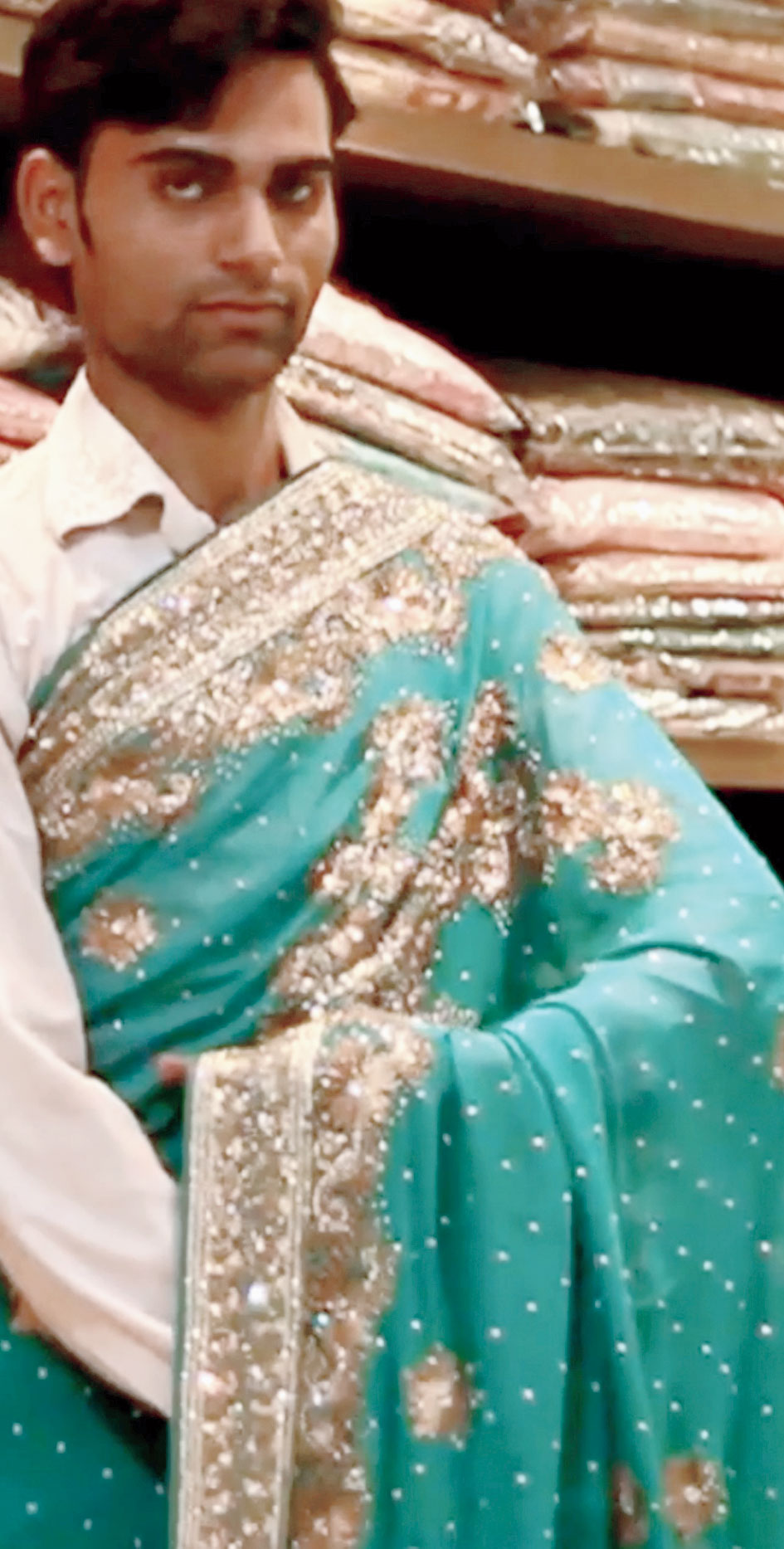Sari Men, a short documentary made by Quashiq Mukherjee or Q, looks at gender fluidity, violence against women and the question of shifting identities for a greater understanding between the sexes. In today’s scenario, the film also raises the relevant question of the men behind the sari; especially the daily wage labourers, who form the bulk of sari weavers. They are in the vast unorganised sector or rather “people without agency”.
The film, a part of the Border & Fall project, was screened at the Museum of Modern Art, New York, late last year. It is now available on YouTube. “It is a film that is continuously evolving,' informs the director, who feels that in today’s times of TikTok, you have to be outrageous to create an awareness.
We all know that sari weaving is predominantly done by men. So is the designing, and of course, the selling at stores big and small. Most handloom weavers are daily wage workers. They are constantly at the mercy of the trade. The sari salesmen are a class apart. They seduce customers with their knowledge and sweet talk. They even drape the sari on themselves; remember the out standing scene of Rajkumar Rao selling a sari in the film, Bareilly ki Barfi?
So #sarimen lends its solidarity to the Lockdown Sari Challenge by Dastakar, in the presently trending #savethesariworker, which urges you to post a video of yourself in a sari and then challenge a friend. No gender is specified. In fact, the image of the Lockdown Challenge features a still from the film where a salesman is shown draped in a zardozi sari, embellished with sequins. The director is seen draped in a sari himself.
Roddur Roy, a maverick artist, is another male who has taken up the sari challenge. He has posted himself, singing and dancing on his channel, clad in a sari of course.
The unstitched garment has some neutrality attributed to it in any case. From the angavastram for men to the women's sari, this unstitched 9-yard something is the most glamorous garment for many. It can be worn every which way. Himanshu Varma of Red Earth often flaunts himself in a sari.
With the lockdown, there is going to be a huge blow to this sector no doubt, with those already marginalised, the hardest hit. So the bigger question is not who finally drapes the sari but men behind the sari; the men who have seamlessly kept the weaving traditions alive, whether it is in Benaras, Bengal or Dharmavaram.
One hopes that the real sari men gets due attention and not become a part of any gimmick. They are the true artists who work with such attention to details and come up with such lovely and tactile masterpieces of living art.










